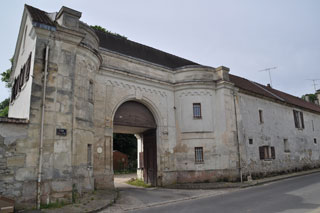Prochain point : lat="" lon=""

The railway orphanage
A former seigneurial estate
A vast domain...
In the late sixteenth century, the domain was described as comprising a large manor house with courtyard, dovecote, barn, sheepfold, press and garden. In the seventeenth century, when it was purchased by François de Mornay, the overlord of Ambleville, there was nothing more than a stately home. After 1686, a first château and a chapel were built on this site. The overlord extended his domain and ordered the village's two farms to be built. Before the Revolution a second building was built (alongside the road) and connected to the first by a gallery. In 1827, the estate was sold off in lots; the château and its 21-hectare park were sold separately from the farms and the Champs Mill. The publisher Calmann-Lévy bought the château in 1886 and ordered this monumental, Neo-Renaissance style portal to be built.
...which took in railway orphans
From 1911 until 1988, the château was owned by the Syndicat National des Chemins de Fer (French National Union of Railways). Starting in 1903, this lay union created a structure that allowed it to come to the aid of the orphaned children of railway workers and employees. The first children were taken in on 25 May 1911. During the various worldwide conflicts, it took in the children of war refugees. After a great deal of expansion and renovation, it was eventually able to house up to 160 children. In the late 1960s and throughout the 1970s, priority was given to supporting the children within their families. Requests for children to be taken in dwindled and the centre closed its doors in 1985.





